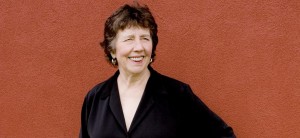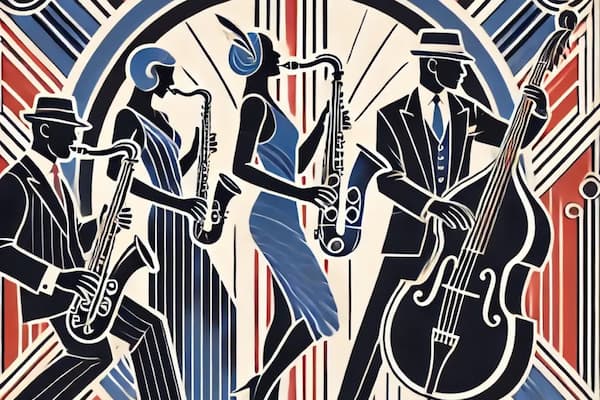
Joan Tower
Our attention was caught by a number of works that make reference to other works and we found, through her ideas, a new way of looking at her antecedents’ pieces.
In 1911, Stravinsky wrote his ballet Petrushka for Diagalev’s Ballets Russes. The next year, Arnold Schoenberg wrote his melodrama, Pierrot Lunaire, for a unique ensemble of flute, clarinet, violin, cello, and piano, now simply called a Pierrot Ensemble. This ensemble has been used for chamber music throughout the 20th and 21st centuries.
Schoenberg: Pierrot Lunaire: Part I: No. 1. Moondrunk (Christine Schäfer, narrator; Ensemble InterContempoerain; Pierre Boulez, cond.)
Each instrument has its own voice and each contributes to the moonlit setting of the songs.
In 1980, Tower wrote Petroushskates, using the Pierrot ensemble as the basis for a piece initially inspired by the Shrovetide Fair section of Petrushka,
Stravinksy: Petrushka: Tableau IV: The Shrove-Tide Fair (Philharmonia Orchestra; Robert Craft, cond.)
At the same time, Tower was inspired by an ice-skating competition that she was watching at the time. She said: “…I became fascinated with the way the curving, twirling, and jumping figure are woven around a singular continuous flowing action.” She also said that she “loved Petrushka and wanted to create an homage to Stravinsky and that piece….”
Tower: Petroushskates (Eighth Blackbird)
Another work that captures the works of other composers includes her Fanfare for the Uncommon Woman, written in 6 parts between 1987 and 1997. Fanfares 1–3 and 5 were written for brass, while 4 and 6 are for full orchestra.
The title, of course, comes from Aaron Copland’s Fanfare for the Common Man, written in 1942 and inspired by a speech by the U.S. Vice President Henry A. Wallace, in which Wallace proclaimed the dawning of the “Century of the Common Man.”
Copland: Fanfare for the Common Man (Saint Louis Symphony Orchestra; Leonard Slatkin, cond.)
Tower’s Fanfare for the Uncommon Woman No. 1, uses the same instrumentation as Copland’s but with extra percussion. She dedicated the work in general to “women who take risks and who are adventurous”; the work as a whole is dedicated to the conductor Marin Alsop.
Tower: Fanfare for the Uncommon Woman No. 1 (Saint Louis Symphony Orchestra; Leonard Slatkin, cond.)
The sixth and final part of the work lets you hear just how far away from Copland Tower travelled.
Bartók: Concerto for Orchestra, BB 123: II. Giuoco delle coppie: Allegretto scherzando (Chicago Symphony Orchestra; Georg Solti, cond.)
In her Concerto for Orchestra, Tower built on her experience of writing three earlier concertos (for clarinet, flute, and violin) and created her own subsets in the orchestra. She noted: “…here not only solos, but duos, trios, and other combinations of instruments form structural, timbral, and emotive elements of the piece.” She resisted naming this a Concerto for Orchestra, being fully aware of the other works with that title by Bartók, Lutosławski, and Husa, but in the end, has made her own contribution to the genre.
Tower: Concerto for Orchestra: Part I (Nashville Symphony Orchestra; Leonard Slatkin, cond.)
Each of Tower’s works that looks back on earlier works permits us to hear those earlier works with new ears – instead of being just a piece written for a time and a place, we can hear how the work has cast its influence forward. Tower’s music looks deeply into these works and yet produces something that is a unique statement, a new view, and a new sound.



